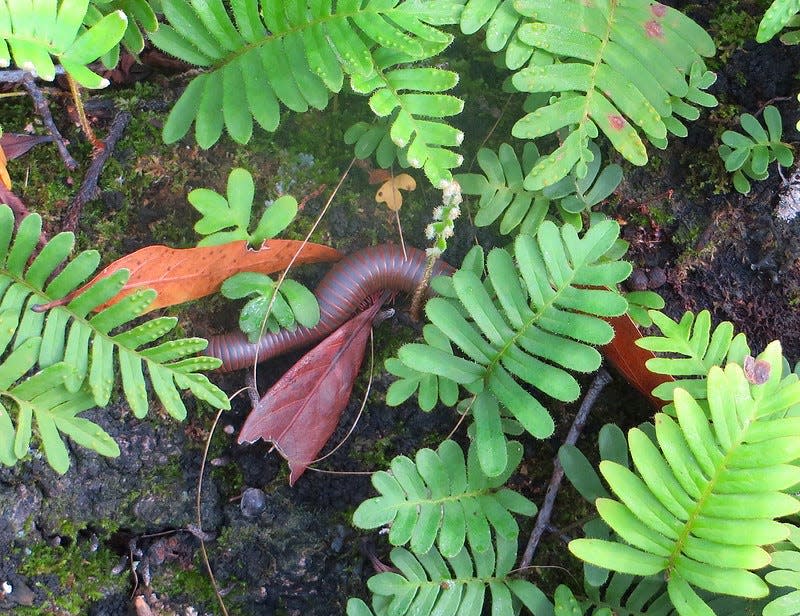CHARLES REYNOLDS: A never-say-die fern

Resurrection fern, an epiphytic species that grows throughout Florida, has fascinated gardeners and hikers for centuries. This fern is typically found on the deeply corrugated bark of Southern live oaks. Its fronds — 2 inches wide and up to 10 inches long — shrivel and turn gray during prolonged dry spells. All that’s required for revival, however, is moderate rainfall. The species (Pleopeltis polypodioides) has a vast natural range, extending from New York to the Caribbean, Mexico, and Central and South America.
How long can a clump of resurrection fern live without water? The conservative answer is at least several months, though one online source conjectured a span of decades. Like other epiphytes — aka air plants — resurrection fern is in no way parasitic. It garners needed nutrients from dissolved organic matter on the branches it colonizes via rhizomes. Since ferns don’t flower, they use spores, not seeds, to reproduce. Gardeners can cultivate resurrection fern by spreading moistened peat moss on driftwood or sections of bark and pressing in the plants’ roots. Ferns should be tied in place until they’re established.
AWARD-WINNING PLANTS
The All-America Selections committee has already announced five winners for 2023. Among those suitable for Central Florida are Rubyfirm watermelon, a coneflower dubbed Artisan Yellow Ombre, Wildcat cayenne pepper ,and salvia Blue by You. Echinacea plants like Artisan Yellow Ombre are best for cooler locations here, and, even then, they’re usually short-lived. Seeds, and in some instances plants, should show up locally and in online dealers’ catalogs by spring.
SILVER TORCH CACTUS HANDSOME HOUSEPLANT
Silver torch is a durable, attractive cactus for bright windowsills. The species, from high altitudes in Bolivia, boasts millions of silvery spines and also bears red, woolly flowers in spring. Up to 10 feet tall in the wild, it grows steadily indoors but won’t outgrow a modest niche for years. As plants mature, they tend to clump at the base, and some specimens may branch. This species (Cleistocactus strausii), a popular indoor plant for generations, has green, ribbed stems that are virtually concealed by silver spines. Fertilize three or four times annually with Schultz Cactus Plus. Propagate with seeds and stem cuttings. Plants are available online.
OUTSTANDING MUSTARD PLANTS
Mustard seeds can be sown now for a source of greens that will last through spring. But why not cultivate a mustard with broad, deep-purple leaves that boast a spicy garlic-mustard flavor? Japanese Giant Red mustard is a wonderfully ornamental variety that’s loaded with antioxidants. Leaves are excellent stir-fried or boiled. Just as attention getting, though not for its beauty, is Chinese Giant Leaf mustard, with mild but flavorful leaves that can grow 3 feet long and 18 inches wide. Their unusually sweet taste makes the leaves ideal for eating raw in salads. Seeds of both varieties, which can be sown through March, are available by visiting www.RareSeeds.com.
This article originally appeared on The Ledger: WEEKEND PLANTINGS

